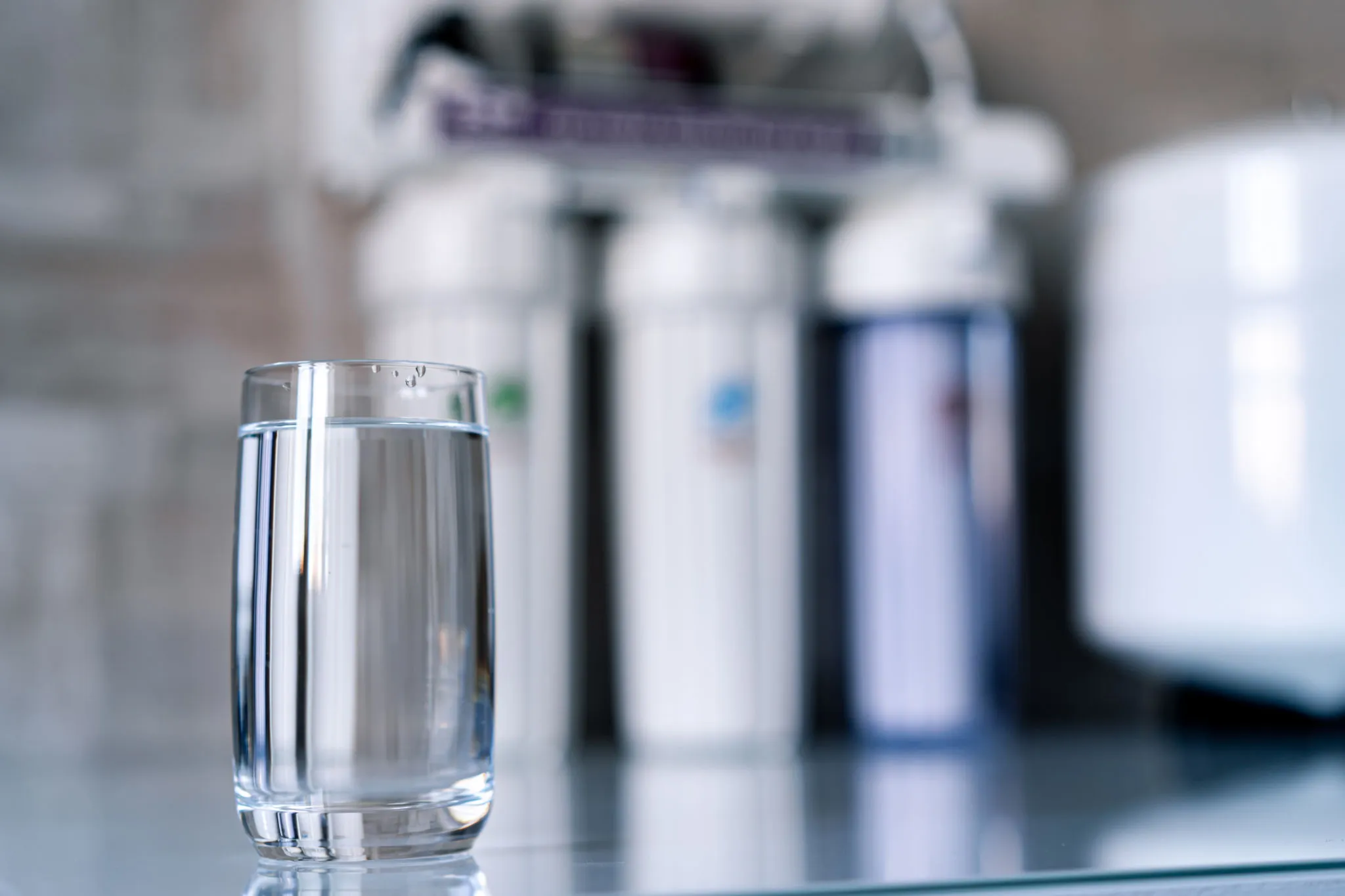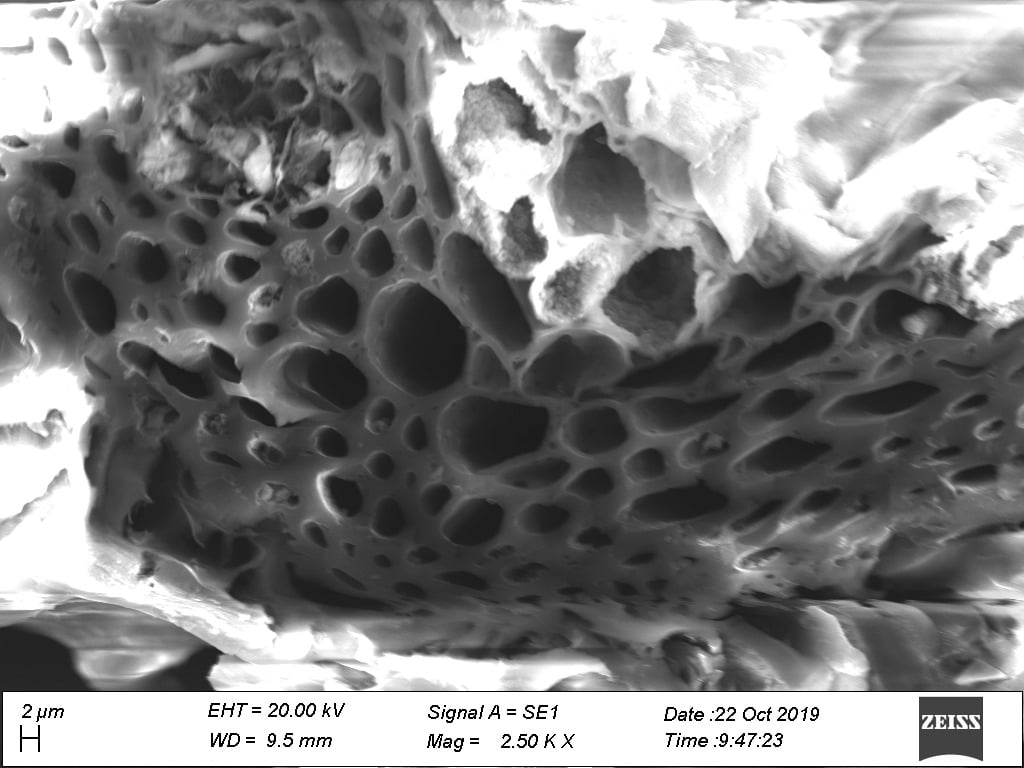
Development of cost-effective natural waste materials for drinking water purification
This project was established to create cost-effective materials to remove heavy metals and hardness from water derived from natural waste.
Introduction
Access to clean water and sanitation is a global challenge that is expected to worsen in the coming decades. With water scarcity becoming a reality in many regions, it is crucial to find cost-effective and environmentally friendly solutions to purify water. The development of low-cost filters for water purification is a critical step in addressing this challenge.
Objective
The main objective of this study is to create low-cost materials to remove heavy metals and hardness from water derived from natural waste. The project aimed to develop cost-effective filters for water purification that minimize the use of chemicals and their impact on the environment. The use of activated carbon derived from rice husk and chitosan derived from shrimp shells as low-cost adsorbents is an important aspect of the study.



Low-Cost Adsorbents
The goal of this project was to develop cost-effective materials for water purification that could remove heavy metals and hardness from water derived from natural waste. Two main low-cost adsorbents were used in this project: chitosan and activated carbon.
Chitosan
Chitosan is a biopolymer that is obtained through the alkaline deacetylation of chitin, which is the second most abundant biopolymer in nature after cellulose. Chitosan is commonly extracted from sea crustacean exoskeletons such as shrimp, crab, and prawns. Chitosan has several desirable properties, including its availability, biodegradability, and non-toxicity. It is also environmentally friendly and has no side effects if implanted in the body. Studies have shown that chitosan has a higher metal chelating ability compared to other bioadsorbents and natural polymers obtained from seafood waste.
Properties of Chitosan:
- Obtained from sea crustacean exoskeletons
- Biodegradable and environmentally friendly
- Non-toxic and has no side effects
- Higher metal chelating ability compared to other bioadsorbents.
Activated Carbon
Activated carbon is a carbonaceous material with a large internal surface area and porous structure that is obtained through high-temperature processing of raw materials. The porous structure of activated carbon allows it to adsorb materials from liquid and gas phases, making it an effective adsorbent. Activated carbon is commonly produced from waste materials, such as rice husks, because it is cost-effective and environmentally conscious.
Properties of Activated Carbon:
- High internal surface area and porous structure
- Ability to adsorb materials from liquid and gas phases
- Can be produced from waste materials for cost-effectiveness and environmental sustainability
- Effective adsorbent due to its chemical structure.
Rice Husk as a Precursor for Activated Carbon
Water purification is a critical challenge faced by people all over the world, with the demand for clean water expected to rise in the coming years. This has led to a growing need for low-cost methods of water purification that minimize the use of chemicals and their impact on the environment. One solution to this challenge is the use of activated carbon for water purification.
One of the most cost-effective and environmentally conscious methods of producing activated carbon is using rice husk as a raw material. Rice husk is an abundant waste material and is widely available, making it an ideal precursor for activated carbon production.
The production of activated carbon from rice husk involves chemical activation with different agents such as potassium hydroxide (KOH), sodium hydroxide (NaOH), sodium carbonate (Na2CO3), zinc chloride (ZnCl2), among others. The resulting activated carbon has the required adsorptive capacity, chemical purity, mechanical strength, and low production cost. This makes it an attractive alternative to traditional methods of water purification and contributes to a more sustainable future.
Shrimp Shells as a Source of Chitosan
Shrimp shells are a rich source of chitosan, a biopolymer that is readily available, biodegradable, and environmentally friendly. The production of chitosan from shrimp shells involves the alkaline deacetylation of chitin, which is the second most abundant biopolymer in nature after cellulose. This process results in the creation of a linear copolymer made up of 1,4-linked 2-acetamido-2-deoxy-b-D-glucopyranose (GlcNAc) and 2-amino-2-deoxy-b-D-gluco-pyranose (GlcN) units. Chitosan obtained from shrimp shells has been found to have a higher metal chelating ability in comparison to other bioadsorbents and natural polymers obtained from seafood waste.
One of the key advantages of using shrimp shells as a raw material is the abundant availability of seafood waste in many coastal regions of the world. This means that chitosan production can be carried out on an industrial scale, providing a low-cost solution for water purification. In addition, chitosan is biodegradable and environmentally friendly, making it an attractive option for water treatment. Finally, chitosan is non-toxic and has no side effects if implanted in the body, which is a major advantage over other chemical-based water purification methods.
Advantages of Chitosan and Activated Carbon for Water Purification
In the search for cost-effective and environmentally friendly methods of water purification, chitosan and activated carbon have emerged as promising options. Both materials have several key advantages that make them well-suited for this application.
High Adsorptive Capacity
One of the most important advantages of both chitosan and activated carbon is their high adsorptive capacity. This refers to their ability to remove impurities and contaminants from water. The high internal surface area of activated carbon and its porous structure make it an ideal material for adsorbing materials from liquid and gas phases. Chitosan, on the other hand, has a high metal chelating ability, which means that it is highly effective at removing heavy metals from water.
Biodegradable and Environmentally Friendly
Another advantage of chitosan and activated carbon is that they are both biodegradable and environmentally friendly. Chitosan is a natural biopolymer that is obtained from seafood waste, making it a sustainable option for water purification. Activated carbon, when produced from waste materials like rice husk, is also environmentally conscious and does not contribute to the waste problem. Furthermore, both chitosan and activated carbon have no known side effects and are non-toxic, making them safe for use in water purification.
Cost-Effective
Finally, one of the key advantages of chitosan and activated carbon is their cost-effectiveness. The production of chitosan from seafood waste like shrimp shells and the production of activated carbon from waste materials like rice husk is cost-effective and accessible. This makes these materials ideal for use in low-cost filters for water purification, which is a crucial need in many parts of the world where access to clean water is limited.
Conclusion
This study highlights the potential of using natural waste materials, such as rice husk and shrimp shells, as low-cost alternatives for water purification. The use of chitosan and activated carbon as adsorbents showed promising results in removing heavy metals and hardness from water, making them a viable solution for water purification. The results of this study have the potential to impact the water purification industry by offering cost-effective and environmentally conscious alternatives to traditional methods. The future prospects for this study include further research and refinement of the production processes for chitosan and activated carbon, as well as exploring their potential applications in other fields.
In conclusion, the development of low-cost materials for water purification is critical to addressing the growing water crisis. The use of natural waste materials, such as rice husk and shrimp shells, as precursors for chitosan and activated carbon offers a promising solution to this challenge.
References
- W. Wang et al., “A new green technology for direct production of low molecular weight chitosan,” Carbohydr. Polym., vol. 74, no. 1, pp. 127–132, Oct. 2008.
- M. H. Mohammed, P. A. Williams, and O. Tverezovskaya, “Extraction of chitin from prawn shells and conversion to low molecular mass chitosan,” Food Hydrocoll., vol. 31, no. 2, pp. 166–171, Jun. 2013
- Y. Du, Y. Zhao, S. Dai, and B. Yang, “Preparation of water-soluble chitosan from shrimp shell and its antibacterial activity,” Innov. Food Sci. Emerg. Technol., vol. 10, no. 1, pp. 103–107, Jan. 2009
- A. Mohammad-Khah and R. Ansari, “Activated Charcoal: Preparation, characterization and Applications : A review article.
- F. Rodríguez-Reinoso, “The role of carbon materials in heterogeneous catalysis,” Carbon N. Y., vol. 36, no. 3, pp. 159–175, 1998.
- F. Rodríguez-Reinoso, “The role of carbon materials in heterogeneous catalysis,” Carbon N. Y., vol. 36, no. 3, pp. 159–175, 1998.
- J. Chen, L. Zhang, G. Yang, Q. Wang, R. Li, and L. A. Lucia, “Preparation and characterization of activated carbon from hydrochar by phosphoric acid activation and its adsorption performance in prehydrolysis liquor,” BioResources, vol. 12, no. 3, pp. 5928–5941, 2017
- S. M. Nomanbhay and K. Palanisamy, “Removal of heavy metal from industrial wastewater using chitosan coated oil palm shell charcoal,” Electron. J. Biotechnol., vol. 8, no. 1, pp. 43–53, 2005
- A. Ahmadpour and D. D. Do, “The preparation of active carbons from coal by chemical and physical activation,” Carbon N. Y., vol. 34, no. 4, pp. 471–479, 1996.
- M. E. Moustafa, S. A. Shama, D. Zein, and A. R. Kabeil, “Removal of Zn ( II ), Fe ( II ) and Mn ( II ) from Industrial Wastewater by using Active Carbon Prepared from mango seed as Adsorbent .,” vol. 1, no. 0483272, pp. 156–163, 2014.
